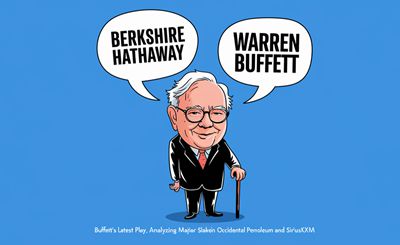US Home Sales Decline: Analyzing the Impact of Record-High Prices and Rising Mortgage Rates
Introduction
The US housing market is currently experiencing a significant downturn, characterized by a decline in existing home sales. This trend is primarily driven by record-high home prices and rising mortgage rates, which have created a challenging environment for potential homebuyers. As of June 2024, the median sale price of a home in the United States has reached unprecedented levels, while mortgage rates have remained persistently high. This report delves into the factors contributing to the decline in home sales, examines the impact on different segments of the market, and explores potential future trends.
Record-High Home Prices
Historical Context and Current Trends
The median sale price of existing homes in the US has been on an upward trajectory for several years, reaching a record high of $419,300 in May 2024. This marks an 11th consecutive month of year-over-year price increases, with a 5.8% rise from the previous year. The rapid appreciation in home prices is a result of several factors, including limited housing inventory, increased demand, and inflationary pressures.
Impact on Affordability
The surge in home prices has significantly impacted affordability, particularly for middle- and lower-income Americans. The Housing Affordability Index, which measures whether a typical family can qualify for a mortgage on a median-priced home, has fallen below 100, indicating that many families are priced out of the market. The monthly mortgage payment for a median-priced home has increased by 12.9% from a year ago, further exacerbating the affordability crisis.
Rising Mortgage Rates
Historical Context and Current Trends
Mortgage rates have also been on the rise, with the average rate on a 30-year fixed mortgage hovering around 7% in
- This is a significant increase from the rates seen in previous years, which were as low as 3.4% in January
- The Federal Reserve’s monetary policy, aimed at curbing inflation, has led to higher interest rates, which in turn have driven up mortgage rates.
Impact on Homebuyers
The increase in mortgage rates has made home financing more expensive, reducing the purchasing power of potential buyers. For every percentage point increase in mortgage rates, the probability of a home sale decreases by 18.1%. This has led to a decline in mortgage applications for home purchases and has deterred many prospective buyers from entering the market. The combination of high home prices and elevated mortgage rates has created a perfect storm, making homeownership increasingly unattainable for many Americans.
Decline in Existing Home Sales
Statistical Overview
Existing home sales in the US have been declining for several months. In May 2024, sales were down 2.8% from a year ago, marking the third consecutive month of decline. The seasonally adjusted annual rate of home sales fell to 4.11 million, a significant drop from previous years. The National Association of REALTORS®’ Pending Home Sales Index also showed a 7.4% decrease compared to a year ago, with all four major regions of the US posting declines in contract signings.
Contributing Factors
Several factors have contributed to the decline in existing home sales:
- High Mortgage Rates: The average 30-year fixed mortgage rate of around 7% has made borrowing more expensive, reducing the number of qualified buyers.
- Record-High Home Prices: The median sale price of $419,300 has priced many potential buyers out of the market.
- Limited Inventory: Although the inventory of existing homes for sale has increased by 18.5% from the same month last year, it remains below pre-pandemic levels. The tight supply of homes has further driven up prices and limited options for buyers.
- Lock-In Effect: Homeowners with existing mortgages at lower interest rates are reluctant to sell their homes and take out new, more costly mortgages. This has led to a 57% reduction in home sales last quarter and prevented 1.33 million sales between Q2 2022 and Q4 2023.
Impact on Different Market Segments
First-Time Homebuyers
First-time homebuyers have been particularly affected by the current market conditions. Despite making up 31% of sales in May 2024, the affordability challenges posed by high prices and mortgage rates have made it difficult for many to enter the market. The divide between those who already own properties and those who wish to be first-time buyers has widened, creating a significant barrier to homeownership for younger and lower-income individuals.
Existing Homeowners
Existing homeowners are also feeling the impact of the current market conditions. Many are hesitant to sell their homes due to the higher prices and the prospect of taking on new, more expensive mortgages. This reluctance to sell has contributed to the limited inventory of homes on the market, further driving up prices and exacerbating the affordability crisis.
Future Trends and Potential Solutions
Market Outlook
The outlook for the US housing market remains uncertain. While some experts predict that mortgage rates may decline over the summer, potentially improving affordability, others believe that the high prices and limited inventory will continue to pose challenges. The Federal Reserve’s monetary policy and broader economic conditions will play a crucial role in shaping the future of the housing market.
Potential Solutions
Several potential solutions could help address the current challenges in the housing market:
- Increasing Housing Supply: Efforts to increase the supply of affordable housing could help alleviate the pressure on prices and improve affordability. This could include measures to incentivize new construction and streamline zoning regulations.
- Monetary Policy Adjustments: If the Federal Reserve were to lower interest rates, it could lead to a decrease in mortgage rates, making home financing more affordable for potential buyers.
- Financial Assistance Programs: Expanding financial assistance programs for first-time homebuyers, such as down payment assistance and low-interest loans, could help more individuals enter the market.
- Addressing Inflation: Broader efforts to address inflation and stabilize the economy could also have a positive impact on the housing market by reducing the upward pressure on prices and interest rates.
Conclusion
The US housing market is currently facing significant challenges, driven by record-high home prices and rising mortgage rates. These factors have led to a decline in existing home sales, creating a challenging environment for both potential buyers and existing homeowners. While the future of the housing market remains uncertain, addressing the underlying issues of limited supply, high prices, and elevated mortgage rates will be crucial in improving affordability and stabilizing the market. By implementing targeted solutions and closely monitoring economic conditions, policymakers and industry stakeholders can work towards creating a more balanced and accessible housing market for all Americans.


